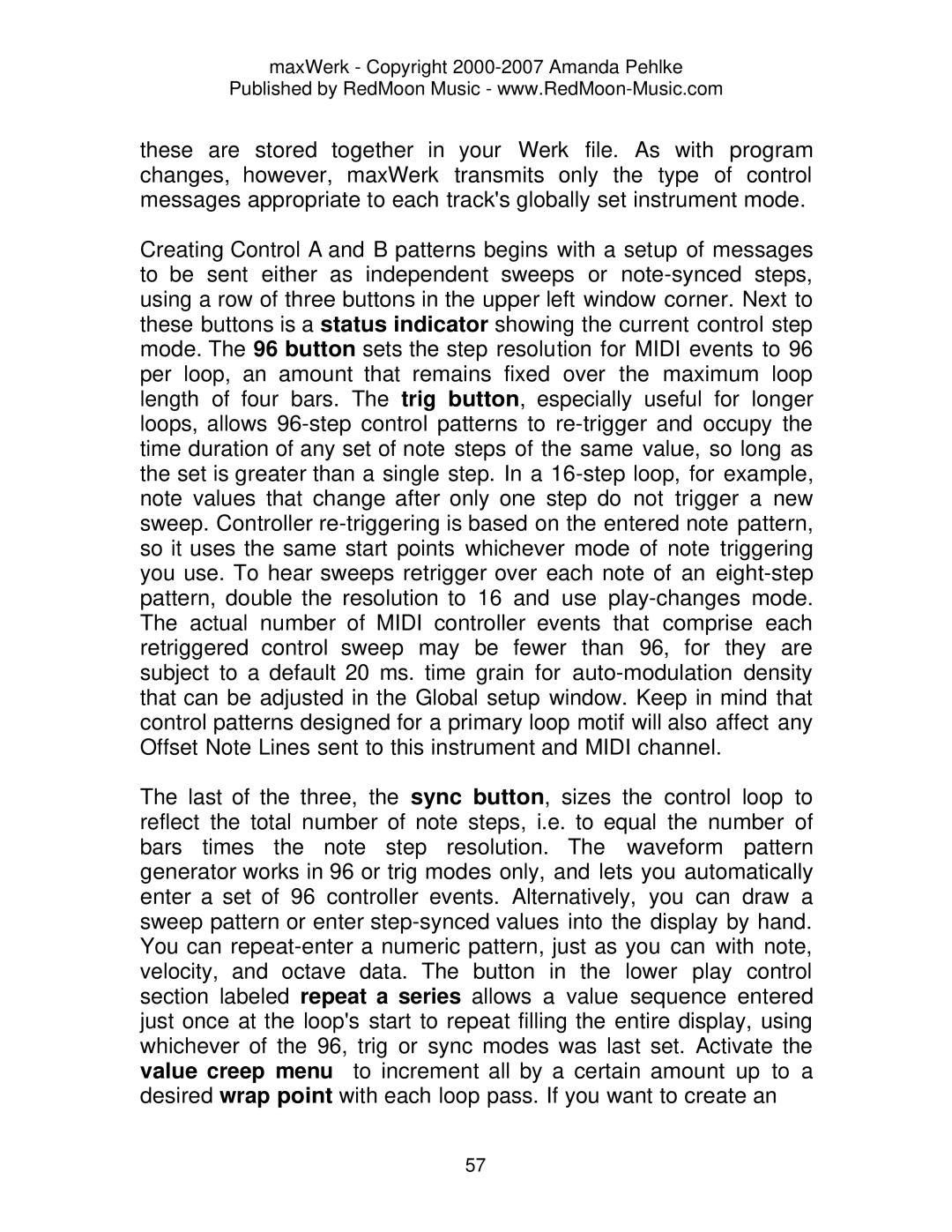maxWerk - Copyright 2000-2007 Amanda Pehlke
Published by RedMoon Music - www.RedMoon-Music.com
these are stored together in your Werk file. As with program changes, however, maxWerk transmits only the type of control messages appropriate to each track's globally set instrument mode.
Creating Control A and B patterns begins with a setup of messages to be sent either as independent sweeps or note-synced steps, using a row of three buttons in the upper left window corner. Next to these buttons is a status indicator showing the current control step mode. The 96 button sets the step resolution for MIDI events to 96 per loop, an amount that remains fixed over the maximum loop length of four bars. The trig button, especially useful for longer loops, allows 96-step control patterns to re-trigger and occupy the time duration of any set of note steps of the same value, so long as the set is greater than a single step. In a 16-step loop, for example, note values that change after only one step do not trigger a new sweep. Controller re-triggering is based on the entered note pattern, so it uses the same start points whichever mode of note triggering you use. To hear sweeps retrigger over each note of an eight-step pattern, double the resolution to 16 and use play-changes mode. The actual number of MIDI controller events that comprise each retriggered control sweep may be fewer than 96, for they are subject to a default 20 ms. time grain for auto-modulation density that can be adjusted in the Global setup window. Keep in mind that control patterns designed for a primary loop motif will also affect any Offset Note Lines sent to this instrument and MIDI channel.
The last of the three, the sync button, sizes the control loop to reflect the total number of note steps, i.e. to equal the number of bars times the note step resolution. The waveform pattern generator works in 96 or trig modes only, and lets you automatically enter a set of 96 controller events. Alternatively, you can draw a sweep pattern or enter step-synced values into the display by hand. You can repeat-enter a numeric pattern, just as you can with note, velocity, and octave data. The button in the lower play control section labeled repeat a series allows a value sequence entered just once at the loop's start to repeat filling the entire display, using whichever of the 96, trig or sync modes was last set. Activate the value creep menu to increment all by a certain amount up to a desired wrap point with each loop pass. If you want to create an
